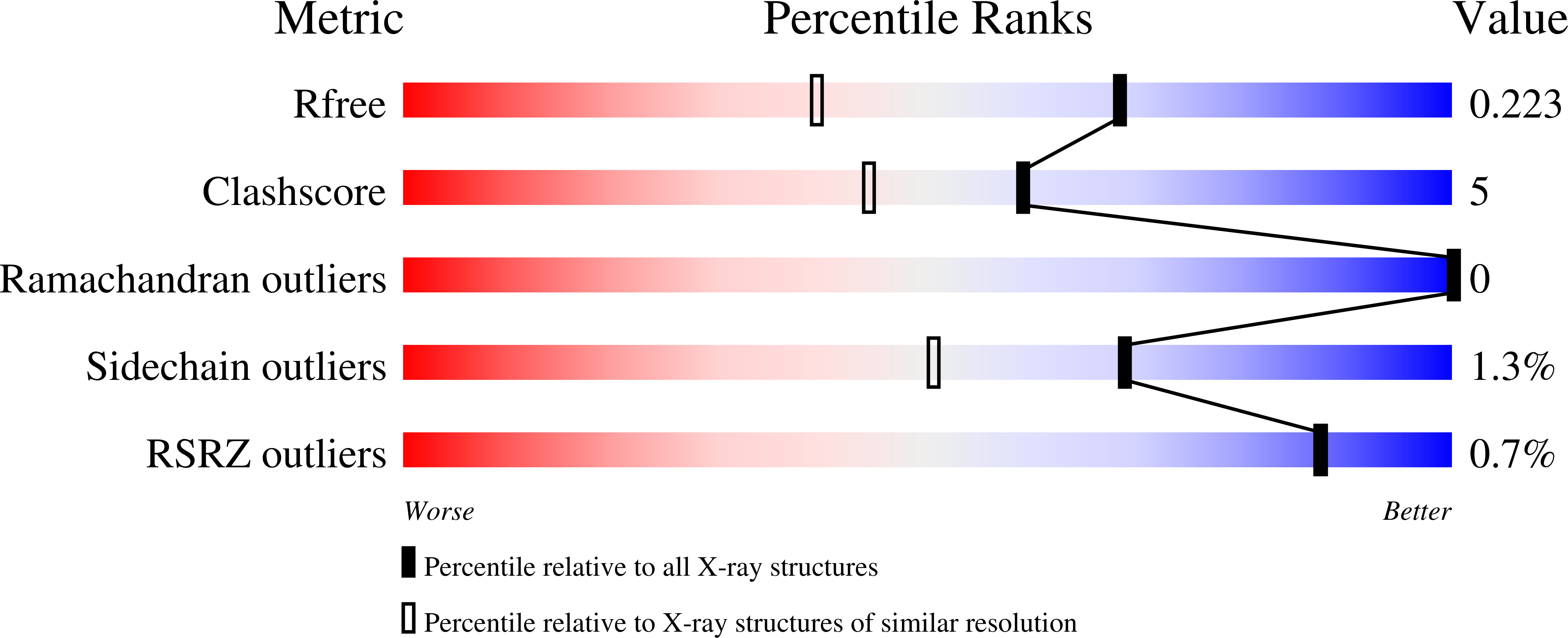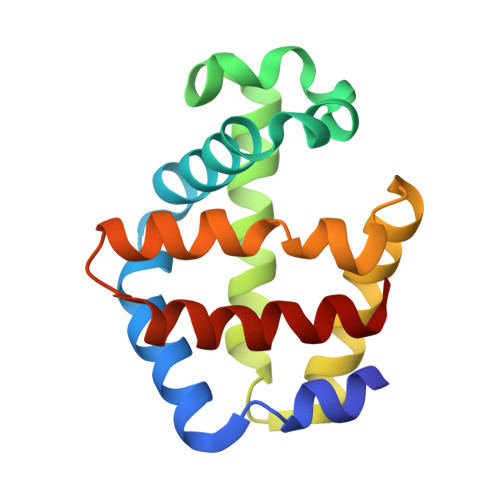Ligand Migration and Binding in the Dimeric Hemoglobin of Scapharca inaequivalvis
Nienhaus, K., Knapp, J.E., Palladino, P., Royer Jr., W.E., Nienhaus, G.U.(2007) Biochemistry 46: 14018-14031
- PubMed: 18001141
- DOI: https://doi.org/10.1021/bi7016798
- Primary Citation of Related Structures:
2R4W, 2R4X, 2R4Y, 2R4Z, 2Z85, 2Z8A - PubMed Abstract:
Using Fourier transform infrared (FTIR) spectroscopy combined with temperature derivative spectroscopy (TDS) at cryogenic temperatures, we have studied CO binding to the heme and CO migration among cavities in the interior of the dimeric hemoglobin of Scapharca inaequivalvis (HbI) after photodissociation. By combining these studies with X-ray crystallography, three transient ligand docking sites were identified: a primary docking site B in close vicinity to the heme iron, and two secondary docking sites C and D corresponding to the Xe4 and Xe2 cavities of myoglobin. To assess the relevance of these findings for physiological binding, we also performed flash photolysis experiments on HbICO at room temperature and equilibrium binding studies with dioxygen. Our results show that the Xe4 and Xe2 cavities serve as transient docking sites for unbound ligands in the protein, but not as way stations on the entry/exit pathway. For HbI, the so-called histidine gate mechanism proposed for other globins appears as a plausible entry/exit route as well.
Organizational Affiliation:
Institute of Biophysics, University of Ulm, 89069 Ulm, Germany.

















